Car Free Day in Szeged!
Visitors to the car free day could take part in several programmes at a number of sites in Szeged on 22 September 2021.
One of these programmes was a biker’s breakfast. At Anna Well, bikers stopped not only because the traffic light was red to give way to the Pesa trams travelling to Europe Grove: almost everyone also pulled the brakes in Radio 88’s beach flag tunnel. The bikers’ breakfast was held here, where – as usual – bikers were given cocoa (and)/or pizza rolls, fruit juices, sweet curd bars and even Pick snack sausages, handed out by students of Fodor Secondary School. At the Szeged on Bike mini service point, tyres were inflated, chains never or long ago oiled were oiled – and many bikers seized the opportunity.
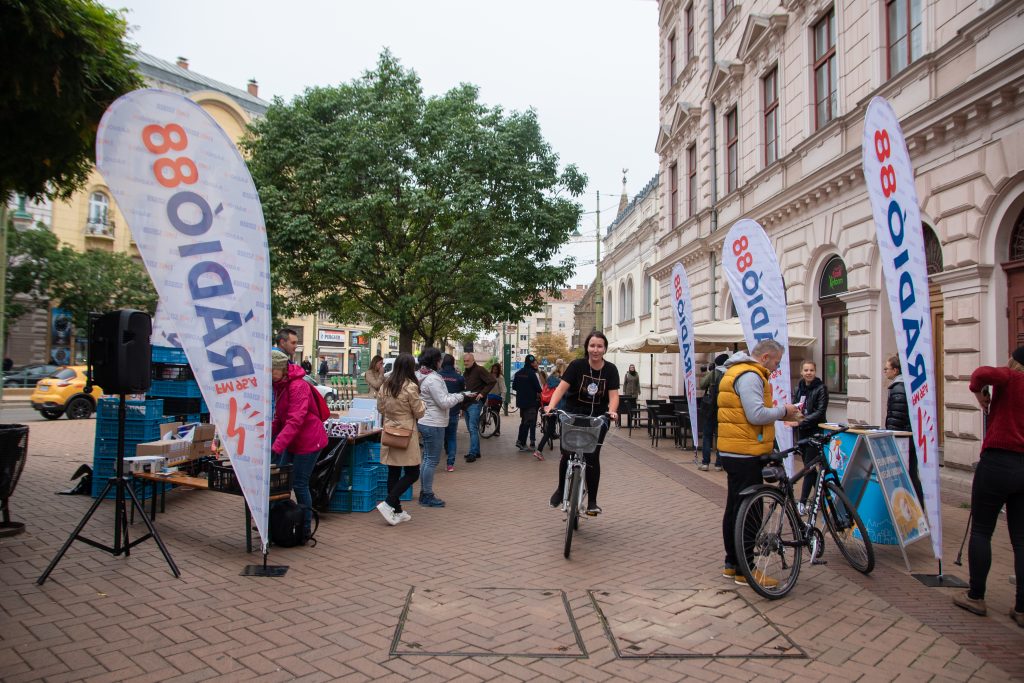
Without an exception, the bikers who stopped for a few seconds or slowed down said they had used the bicycle for years as it is a much faster means to get to work and easier to stop and park near their workplace compared to the car or community transport.
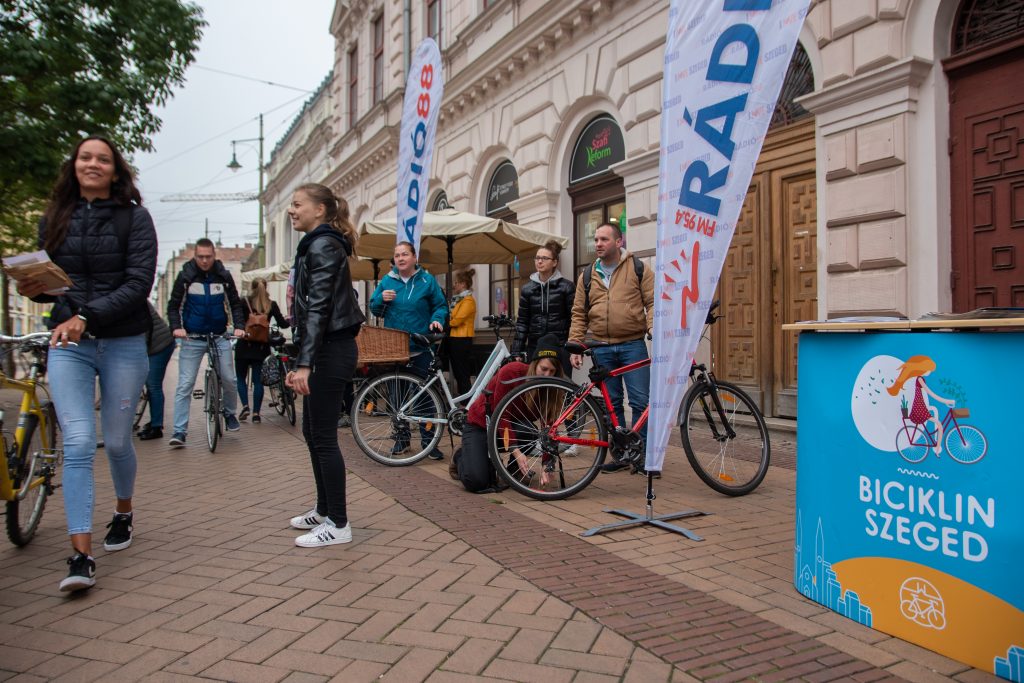
A press conference was held here, at the bikers’ breakfast site, by Vice Mayor for City Development Sándor Nagy, who, as is his habit, left his home in Szőreg on bicycle and got here much faster than he would have by car over the City Centre Bridge: he had travelled six kilometres in twenty-one minutes. He outlined the transport development projects and the investments already implemented and aimed at supporting bike usage in Szeged. He emphasised that the problems related to the use of cars were becoming constant in city centres everywhere, not only in Szeged, saying: “these are the street widths our ancestors have left to us”. This is why efforts are made all over the world to motivate city dwellers to use, if possible, sustainable means of transport. These efforts are shown to people through events like the mobility week, the no-cars day or the bikers’ breakfast, though Szeged is taking steps to make transport as sustainable as possible not only at and through such events. Talking about these, Sándor Nagy mentioned the tram large project and the trolleybus and bus development projects, as well as proudly reminded the audience that Szeged was the first city to offer free wifi on community transport vehicles and to make it possible for passengers to buy tickets on buses, trolleybuses and trams electronically.
The SASMob project, which is soon to end, was launched with this aim four years ago: to involve large employers in the efforts to convince employees to choose the bicycle or community transport instead of the car to get to work. The bicycle infrastructure underwent major development in the framework of this project: the companies that took part in the project built bike shelters, and some even established bike service points or bought bicycles and scooters for employees, which the latter could rent for a given period of time. It was also under the umbrella of this project that ticket machines were installed at company premises.
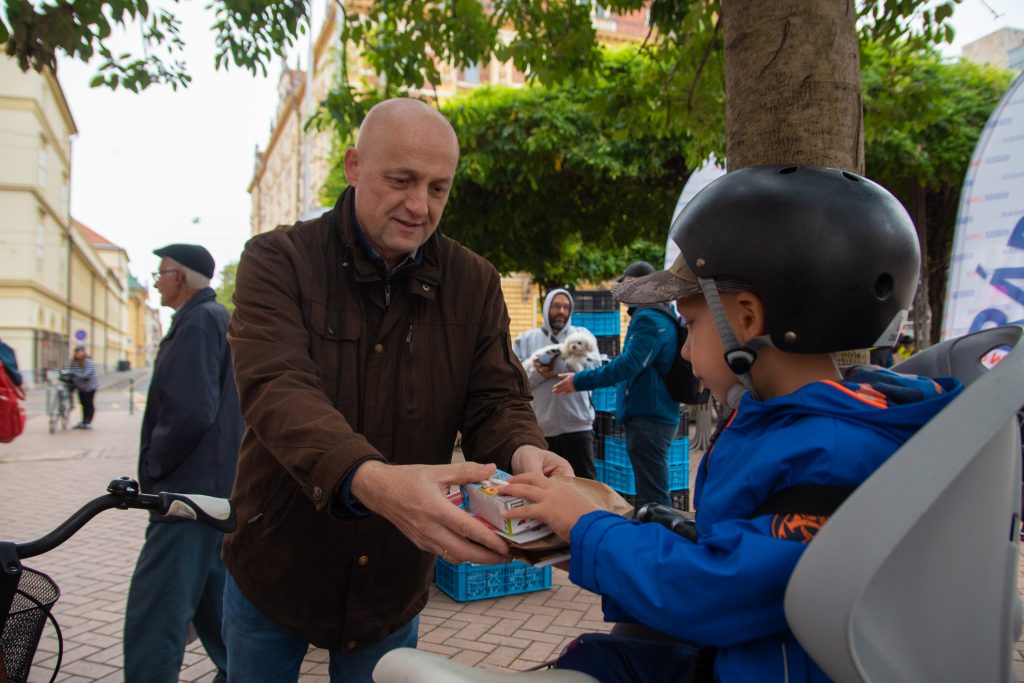
SASMob, which is funded by the European Union, will be “transformed” next year: the municipal government will create a city fund to involve small employers in the work, thus supporting them in the joint efforts made to help employees get to work in as sustainable a way as possible. These companies will be offered funding opportunities for the construction of bike shelters. The ultimate goal is to make as many employers promote sustainable means of transport as possible.
In the SASMob project, parklets were also installed in Szeged, to attract attention.
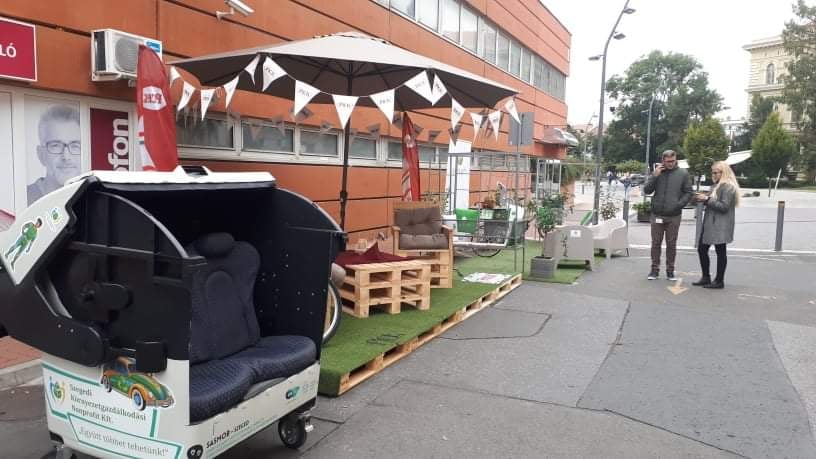
Parklets were first made in San Francisco not very long ago, in 2005, using the most ancient method: the parking spots were simply purchased where the first parklet was created. The transaction was a bit complicated as, at that time, coins were needed in the traditional parking meters. But the idea was finally put into practice – and this is how parklets started. Parklets conquered America and are also spreading in Europe. It would be an outstanding achievement if Szeged could be one of the idea’s pioneers in Europe. In Hungary, however, parklets are relatively new. The first – experimental – parklet solutions were shown to the public at the Szeged No-cars Day, by Szeged-based companies participating in the SASMob project.
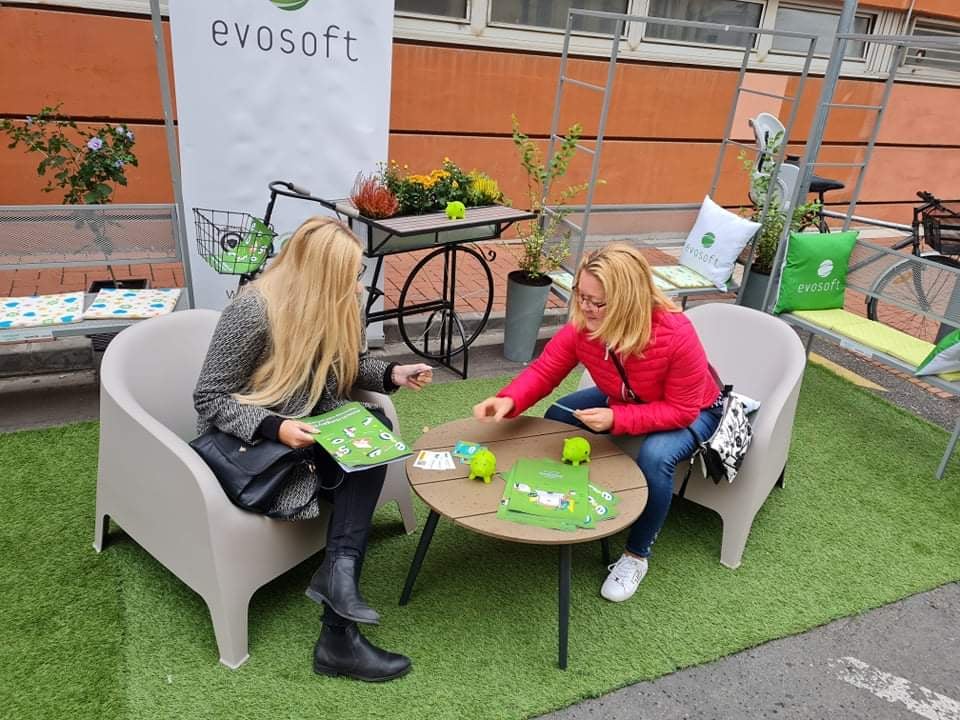
Ágnes Erdei, leader of Evosoft Hungary Kft.’s Szeged site, said not much was needed for such an installation.
– These items of furniture are used by our company every day, and now we brought them here to Jókai Street. The coordinators of SASMob left it us how we take part in this parklet thing: the aim was for us to try out and show people how parklets could be best used – said Ágnes Erdei.
Obviously, the purpose of parklets is not to irritate drivers by making it more difficult for them to find a place to park. Parklets can be a part of the awareness raising efforts made in a city, a district, a few streets or only a section of one single street to remind people that there are ways of transport other than the car. Ways that are sustainable and green. And these ways leave us time to travel more slowly, without any haste, yet getting to our destination in a conscious and well-planned way. This is where parklets come into the picture – looking at things from the other side. They give us a chance to feel better in the street – without a car.
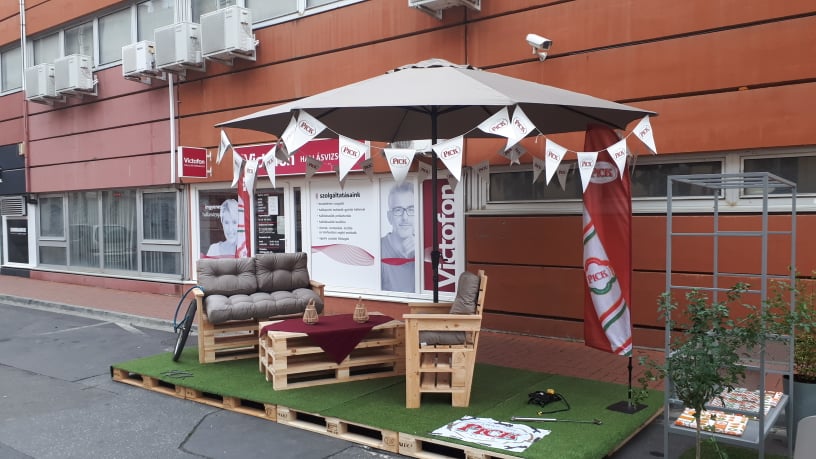
If these are put into practice, we will live and travel in a more sustainable way. And have time – for instance to sit down where we get out of our vehicle on other days. This is what parklets and parklet use are about. It would be so good if Szeged “launched” this soon.
Source: Szeged.hu